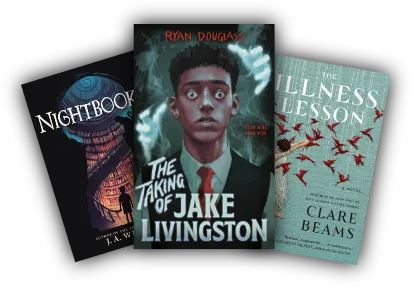How To Get A Book Written And Published

In the age of self-publishing, hybrid models, and AI-assisted writing, getting a book written and published is more accessible than ever, but it still requires dedication, strategy, and informed decisions.
Whether you dream of becoming the next bestselling novelist or want to publish a thought leadership book in your industry, this guide will walk you through every essential step: from developing your idea to holding your published book in your hands.
Table of Contents
ToggleStep 1: Start with a Clear Idea
Every great book begins with a powerful idea. But ideas alone aren’t enough. You need to refine your concept into something specific, original, and marketable.
Ask yourself:
- Who is my target audience?
- What makes my story or message different?
- What’s the core takeaway for the reader?
Tip: Use a working title and a one-sentence summary to clarify your idea. This will help you stay focused as you write.
Step 2: Plan Your Book Structure
A well-structured book keeps readers engaged and ensures you stay on track.
For fiction:
- Outline plot points using a method like Three-Act Structure, Save the Cat, or Snowflake Method.
- Develop characters, settings, and subplots in detail.
For Nonfiction:
- Break down your topic into chapters or lessons.
- Include case studies, real-life examples, stats, and a clear narrative.
Tool Tip: Use apps like Scrivener, Notion, or Plottr to organize your chapters, notes, and timelines.
Step 3: Write the First Draft
Writing a book is not about perfection in the first draft — it’s about getting the words on the page.
Set Realistic Goals:
- Daily word count targets (500–1000 words/day)
- Weekly check-ins to stay motivated
- Silence your inner editor during drafting
Many authors use writing sprints or participate in challenges like NaNoWriMo to push through the first draft.
Step 4: Revise and Edit Thoroughly
Editing is where your book goes from average to excellent.
Types of editing:
- Self-Editing: Fix inconsistencies, tighten prose, and refine dialogue.
- Developmental Editing: Focus on big-picture elements like structure, pacing, and plot holes.
- Line Editing: Improve sentence flow, clarity, and word choice.
- Copyediting & Proofreading: Correct grammar, punctuation, and typos.
Pro Tip: Let your manuscript rest for a week or two before editing. Fresh eyes catch more mistakes.
Step 5: Get Feedback from Beta Readers or Critique Partners
Before you publish, let others read your manuscript.
- Join writing groups online (like Scribophile, Absolute Write, or Reddit’s r/writing).
- Choose beta readers who read your genre.
- Ask for honest, specific feedback on character development, plot clarity, and emotional impact.
Step 6: Decide How You Want to Publish
There are now three main publishing routes to consider:
1. Traditional Publishing
- Submit your manuscript to literary agents or publishers.
- Requires a query letter, synopsis, and sometimes a book proposal (especially for nonfiction).
- Longer process, but offers editorial support, distribution, and prestige.
Downsides: Harder to break into, less creative control, slower timelines.
2. Self-Publishing
- You handle everything from cover design to marketing.
- Publish via platforms like:
- Amazon KDP (Kindle Direct Publishing)
- IngramSpark
- Draft2Digital
3. Hybrid Publishing
- A middle ground where you invest in your book but receive professional support.
- Legit hybrid publishers should not ask for rights or royalties in addition to fees.
- Ideal for professionals who want a high-quality book without pitching agents.
Step 7: Format Your Manuscript
Your book must be formatted properly for both print and digital versions.
eBook Formatting:
- Use tools like Vellum, Atticus, or Reedsy Book Editor.
- Ensure it’s compatible with Kindle, Apple Books, and Kobo.
Print Formatting:
- Choose trim size (e.g., 5″x8″, 6″x9″)
- Insert page numbers, headers, and a copyright page.
- Export in high-quality PDF for print-on-demand platforms.
Step 8: Design a Professional Book Cover
A good cover sells your book. Period.
- Hire a professional book cover designer who understands your genre.
- Use genre-appropriate fonts, color schemes, and imagery.
- Make sure it works well in thumbnail size, especially for Amazon.
Step 9: Write a Compelling Book Description and Author Bio
Your book description is your sales pitch. It should:
- Hook the reader
- Introduce the conflict or promise a transformation
- End with a call-to-action
Your author bio should highlight your expertise, personality, or background, tailored to your book’s subject.
Step 10: Publish and Distribute
For Self-Publishing:
Upload your files to platforms like:
- Amazon KDP (eBook + Paperback + Hardcover)
- IngramSpark (wider print distribution, including bookstores)
- Draft2Digital (aggregates to Apple Books, Barnes & Noble, and more)
Don’t forget:
- Choose keywords and categories
- Set your pricing
- Enable “Look Inside” preview on Amazon
Step 11: Launch and Market Your Book
Publishing your book is only half the journey. Marketing is what gets it read.
Create a Launch Plan
- Set a release date and build anticipation
- Collect early reviews (via ARCs or NetGalley)
- Build an email list and offer bonuses
Marketing Channels
- Amazon Ads, Meta Ads, and BookBub Deals
- BookTok and Instagram Reels (especially for fiction)
- Podcasts and guest blogging (for nonfiction authors)
Now, marketing is all about authenticity. Show up, share your process, and connect with readers.
Bonus Tips for 2025 Authors
- AI writing tools like ChatGPT, Claude, and Jasper can help with idea generation, outlining, and editing, but always bring your human voice.
- Build a personal author brand. Have a website, mailing list, and consistent online presence.
- Audiobooks are booming. Consider recording your book or hiring a voice actor.
- Use reader magnets (like free chapters or short stories) to grow your fanbase.
Final Thoughts: Write the Book That Matters
Writing and publishing a book is a marathon, not a sprint. Whether you’re writing fiction that entertains or nonfiction that educates, your book deserves your best effort — and so do your future readers.
Stay persistent, keep learning, and take it one chapter at a time. The world needs your story.

